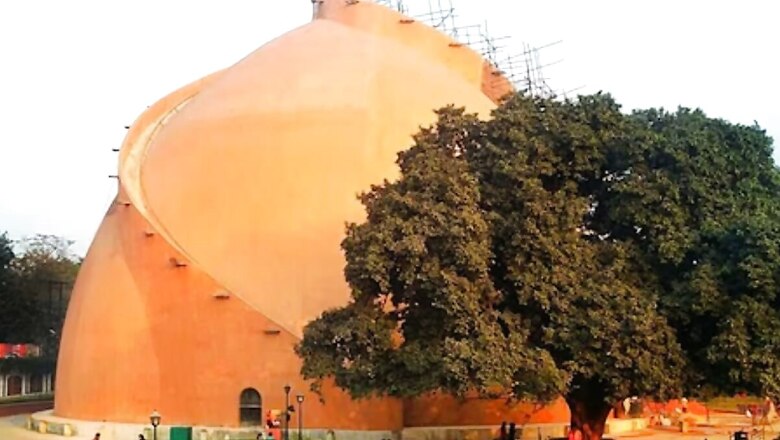
views
Bihar is a state with many heritage and important historical places. In the capital city of Patna, one of the most popular tourist attractions is Golghar, a stupa or round-shaped house quite big. If you climb its top, you will be able to see its top as well. But why was it built? What is its historical importance?
Golghar is a large granary located to the west of the Gandhi Maidan in Patna. In earlier times, generally, grains are stored in a big room of a fort, palace or house. But rarely in medieval or modern history, was there a building built just to store huge quantities of grains. Hence, Golghar is remembered for this.
In 1770, when the Britishers were expanding their presence in India, they felt the need to construct a strong building for storage of grains, after they faced a severe drought condition in Bihar and surrounding areas. The then Governor General of Bengal, Warren Hastings, planned the construction of Golghar. The beehive-shaped structure was designed by Captain John Gastin of the Bengal Engineers, who started the construction on January 20, 1784. It was completed on July 20, 1786.
The storage capacity of Golghar is about 1.40 lakh tonnes of grains. Despite its dilapidated condition and repair works going on, Golghar is still one of the major attractions of the place. The stupa-shaped granary has 145 stairs to reach its very top. You can check out a stunning view of the entire city. In 2002, a drive was organised to improve the appearance of the structure. Today, Golghar is not used as the place it was built for.
To further make it interesting, the area around Golghar has been beautified with gardens. Along with this, a laser show is held here, which is quite famous. The Golghar has never been filled to its maximum capacity. The reason for this as claimed by some is because of a flaw. Reportedly, the doors are designed to open inwards. If the grains are stored at maximum capacity, then the door will not open.


















Comments
0 comment